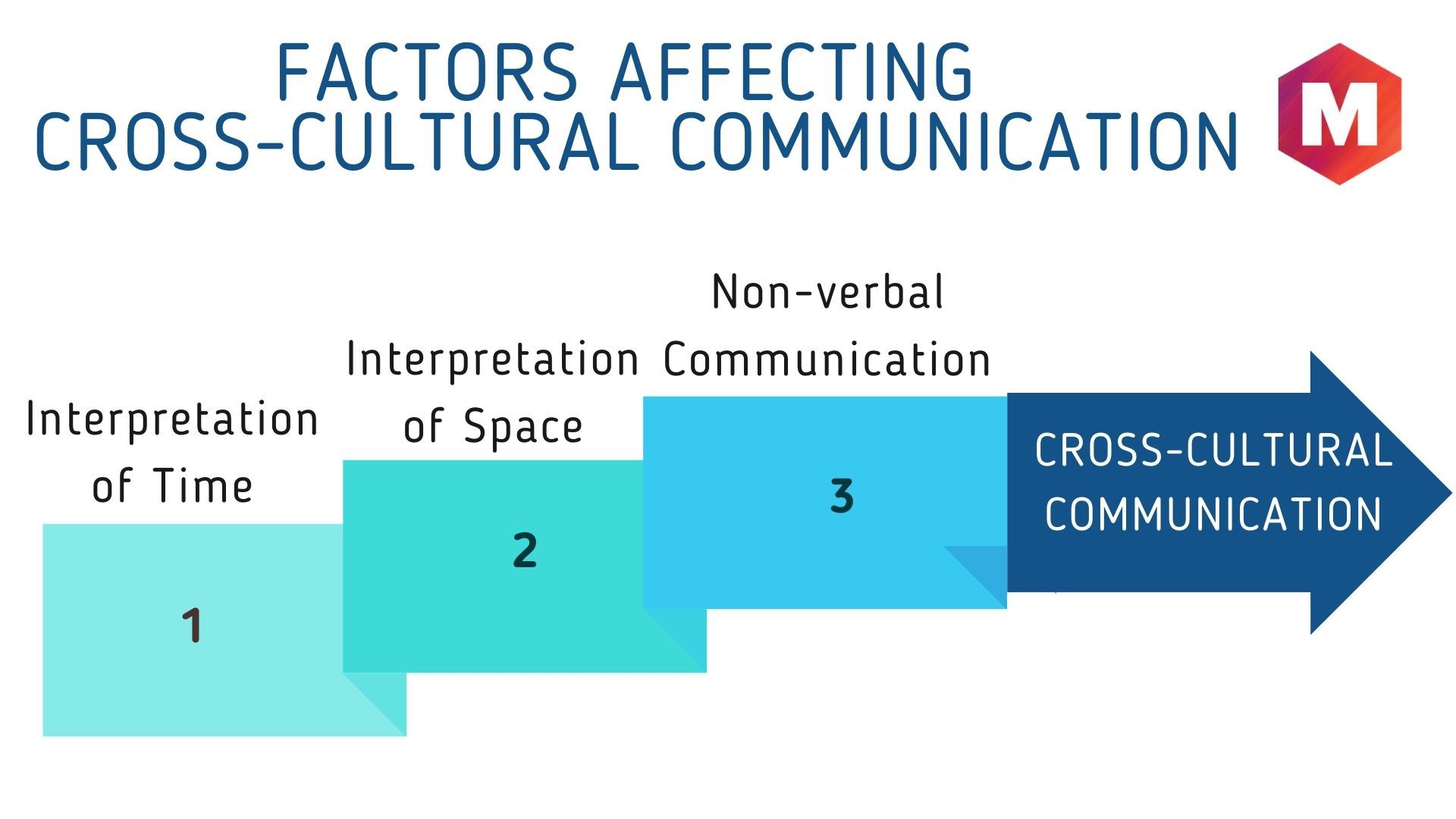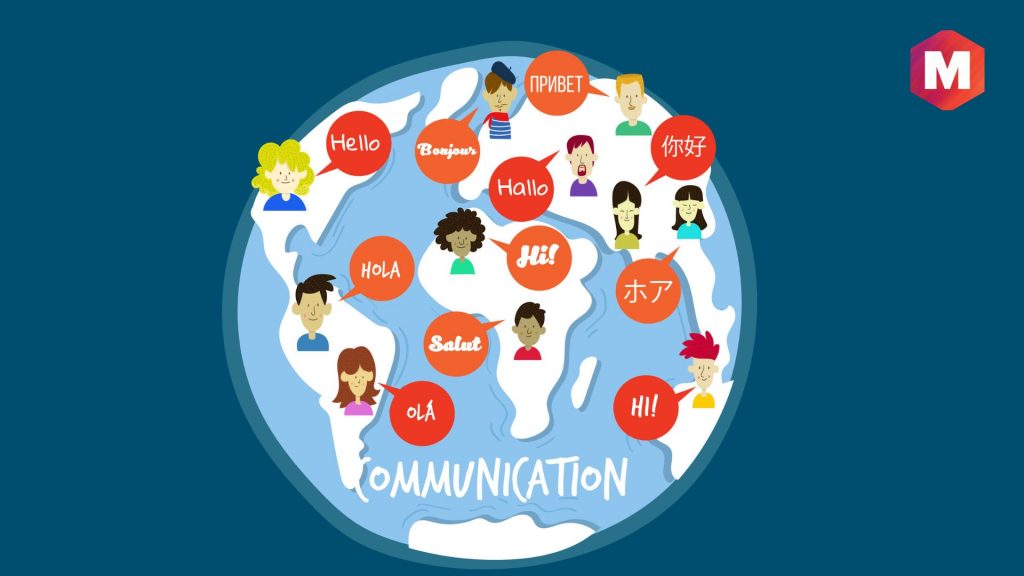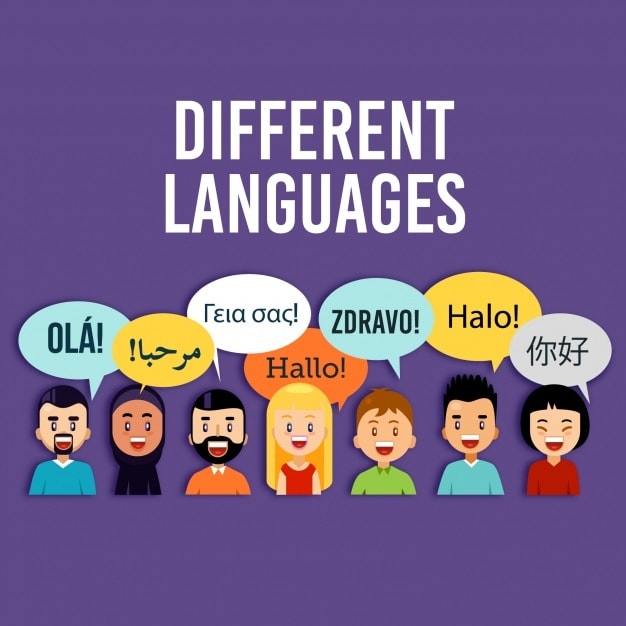
Understanding Cross-Cultural Communication: Types, Differences, and Importance

Cross-cultural communication is the exchange of ideas and information between people from different cultures It is essential for global business success and personal relationships Factors affecting it include time interpretation, space interpretation, and nonverbal communication Effective communication can be achieved through meaningful conversation, avoiding signaling, and awareness Miscommunication sources include assumptions, language and nonverbal misinterpretation, preconceptions, stereotypes, and anxiety
Cross-cultural communication refers to the interaction between individuals from diverse backgrounds, including varying nationalities, work styles, ages, races, ethnicities, sexual orientations, genders, and more. This type of communication aims to facilitate the exchange of ideas and information while navigating and mediating cultural differences through both verbal and nonverbal communication methods.
What is Cross-Cultural Communication?
Communication between individuals of different cultural backgrounds is known as Cross-Cultural Communications. Successful communication does not solely rely on the exchange of words, as even attempts by both parties to communicate can be considered Cross-Cultural Communication. In many instances, negotiations occur using non-verbal cues and actions due to the lack of a common language. The primary focus is on exchanging knowledge rather than the other aspects of communication.
Individuals possess a unique communication style that reflects their cultural identity. Inevitably, we encounter situations where we must engage in intercultural communication to establish a meaningful connection. This need arises frequently in the workplace, where cultural diversity is commonplace. With people from various backgrounds and cultures present, it becomes essential to prevent potential conflicts caused by differing perspectives and approaches.
in the workplace. Effective cross cultural communication can lead to increased productivity, better teamwork, and a more inclusive work environment. It can also help to avoid misunderstandings and conflicts that may arise from cultural differences. Therefore, it is essential for organizations to prioritize cross cultural communication training and education for their employees.
What is the Importance of Cross-Cultural Communication Skills
The introduction of Cross-Cultural Communication in the workplace is necessary because different cultures have unique ways of thinking, analyzing, hearing, accepting, and interpreting various things. As a result, the same words or gestures in the United States' majority culture may have different meanings to individuals from other cultures.
Cross-cultural communication has become increasingly important in today's globalized world. It encompasses communication between individuals from different cultural, societal, or national backgrounds and is relevant in various settings, including businesses, universities, and schools. The ability to effectively communicate across diverse cultures is becoming more prevalent, and the importance of foreign language education cannot be understated. In this section, we will explore the significance of cross-cultural communication and how it can enhance your communication skills.
1. Better Progress
Effective Cross-Cultural Communication plays a crucial role in enhancing the productivity and profitability of any industry by improving the relationship between managers and employees. As employees are the backbone of any organization, their understanding of different cultural backgrounds and communication styles is essential for achieving mutual goals and success.
Effective communication among employees during a project is crucial for the success of any business. With cultural differences being a common barrier, it is important for employees to feel comfortable while interacting with each other. This enables them to communicate effectively, leading to a significant improvement in the progress chart of the business.
Effective communication is crucial in any workplace, and cultural differences can often hinder this process. When employees come from diverse backgrounds, it's important to understand how to communicate with them in a way that fosters mutual understanding and respect. Cross-cultural communication can help bridge the gap and promote harmony and productivity within the organization.
3. Management
In today's globalized world, businesses often have operations in multiple countries, making Cross-Cultural Communication an essential aspect of success. With employees hailing from diverse backgrounds, including different cultures and religions, effective communication practices can help bridge any potential gaps and lead to a more cohesive and productive team.
Each team member will be held to the same standards of conduct as developed by the company's executives. The benchmarks will include a commitment to treating everyone with equality and prohibiting any discrimination based on cultural differences.
Factors Affecting Cross-Cultural Communication
Different factors that might affect such a form of communication are-
1. Interpretation of Time
Punctuality is highly valued in certain cultures such as China and Japan. In these cultures, being late may be considered disrespectful or embarrassing. However, in other cultures like those found in the Middle East and South America, time may not hold the same level of importance.
2. Interpretation of Space
Cultural norms regarding personal space can vary greatly between different countries. While some cultures place great importance on maintaining space during greetings or meetings as a sign of respect, others may not view it as crucial.
3. Non-verbal Communication
In low-context cultures, content holds greater significance than context. This is evident in their preference for written words over oral communication. Conversely, high-context cultures place greater value on context over written content. In such cultures, non-verbal cues are given more importance than language.
How to improve Cross-Cultural Communication?
Enhancing Cross-Cultural Communication is the only solution to tackle the obstacles presented by communication and cultural barriers within a company. It's crucial in all industries that require effective communication, as previously highlighted.
To succeed in any industry, having a well-established business communication process or system is crucial. Unfortunately, many individuals struggle to navigate this area and inadvertently damage their professional relationships. To avoid this, we've compiled some of the most effective methods to enhance your Cross-Cultural Communication skills.
1. Prefer Meaningful Conversation
Meaningful conversations during office hours are crucial for any company, and this holds true for cross-cultural communication as well. Promoting such conversations among employees is a priority for the company to enhance productivity and foster a positive work environment.
It's important for individuals from diverse backgrounds to feel comfortable communicating with each other. However, this isn't always the case and can hinder progress and the ability to initiate conversations. Taking the time to engage with employees from different cultures and learning about their experiences can be a beneficial practice for both the employees and the business. While this may take some time to implement, the positive results make it well worth the effort.
2. Avoid Signaling
Using non-verbal communication can be a sensitive issue for some individuals, particularly those from different cultural backgrounds. It is advisable to establish direct communication with them instead. For example, in America, pointing at something for reference or direction is commonplace, whereas in Japan, using the finger in this manner can be considered disrespectful to their culture. Instead, they use their hand as a non-verbal cue.
3. Awareness
To navigate the Cross-Cultural Communication system effectively, it's important to understand the people you are interacting with. Instead of risking misunderstandings or causing offense later on, it's always better to ask questions and learn about their culture from the start.
It is essential to have a solid understanding of your colleagues' backgrounds and develop a personal perspective on their experiences. By prioritizing these factors and organizing group discussions, the company can improve communication skills among employees and foster greater empathy and understanding of one another's perspectives.
Examples of Cross-Cultural Communication
Mastering cross-cultural communication is a challenging endeavor, yet it is a crucial skill to possess when collaborating with individuals from diverse countries or cultures.
It's crucial to keep in mind that cross-cultural communication can be complex and requires sensitivity and awareness. Some examples of cross-cultural communication include being mindful of differences in language, customs, and nonverbal communication.
When communicating with someone who speaks a different language or comes from a different culture, it's not safe to assume that they'll understand everything you say or do. For instance, just because "bonjour" means hello in French, it doesn't mean that a French person who doesn't speak English will automatically understand your greeting. This is why it's crucial to ask questions and clarify instead of assuming. Additionally, cultural differences can greatly impact how people behave in certain situations, so it's important to keep an open mind and be mindful of the other person's cultural norms. For example, if you're trying to befriend a person from Japan, it's important to remember that physical touch between men and women is often considered rude, so it's best to avoid hugging them unless they express comfort with it.
Tips for Effective Cross-Cultural Communication
Effective cross cultural communication refers to a lot of thought and planning. Here are some tips for making the most of your international interactions:
Don’t assume that everyone thinks in the same way you do.
Be aware of cultural differences in body language, gestures, and facial expressions.
It's important to exercise cultural sensitivity when interacting with individuals from different backgrounds. Avoid making assumptions about their understanding of common phrases such as "you're welcome" or "I don't understand." Take the initiative to learn about their cultural practices beforehand to demonstrate respect and avoid any unintentional offense, such as making inappropriate jokes about their religion or race.
Ask questions. This will help you to understand what the other person is saying, and it will also give you a chance to clarify any misunderstandings that may arise.
Sources of Miscommunication
To enhance cross-cultural communication, it is important to avoid the six sources of miscommunication outlined in LarayBarna's communication theory across cultures. These sources can have a significant impact on effective communication, making it essential to identify and address them.
1. Assumption of similarities
It is a common misconception to assume that one's own behavior, thoughts, and actions are universally accepted and perceived in the same way around the world. This way of thinking can hinder our ability to understand the context of others and may lead to negative views towards those who are different from us.
2. Language Differences
Misunderstandings often arise when individuals communicating with one another do not share a common language. Additionally, certain words within a shared language may carry varying connotations or meanings in different contexts, leading to discrepancies in comprehension.
3. Nonverbal Misinterpretation
Misunderstandings can occur when nonverbal signals are interpreted differently in various cultures. This includes body language, gestures, eye contact, and postures. For example, nodding the head can mean "yes" in some cultures, while in others it can mean "no."
4. Preconceptions and Stereotypes
Misunderstandings can arise from prejudices, xenophobia, and stereotypes related to language or cultural norms. Even preconceptions about nonverbal signals can create communication barriers. It is important to avoid assuming that all members of a group possess a fixed set of characteristics that may not be accurate or fair, as this can lead to misconceptions and differences.
5. Tendency to evaluate
Analyzing others’ tendencies, communication, verbal or nonverbal ways of speaking may also be one of the key reasons behind misconceptions.
6. High anxiety
Experiencing high levels of anxiety during cross-cultural interactions can lead to a distorted perception of reality, resulting in misunderstandings. This heightened state of anxiety can impede your ability to comprehend the situation naturally, and your verbal and nonverbal cues may not effectively convey your intentions or emotions.
Summing Up!
After a thorough discussion, it is evident that Cross-Cultural Communication holds significant value in today's diverse workplace. Companies are taking steps to implement programs that prioritize employee benefit and growth in this area.
Employees must be encouraged to actively participate in programs that enhance their skills in Cross-Cultural Communication. Creating an environment that promotes the understanding of different cultures and religions is essential not only in the workplace, but also in one's personal life. In today's global setup, the relevance of cross-cultural communication cannot be overstated.
NEXT
Face-to-Face Communication
PREV
Corporate Communication
START
Types of Communication










